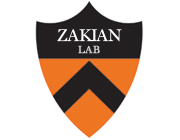The essential Schizosaccharomyces pombe Pfh1 DNA helicase promotes fork movement past G-quadruplex motifs to prevent DNA damage.
Publication Year
2014
Type
Journal Article
Abstract
BACKGROUND: G-quadruplexes (G4s) are stable non-canonical DNA secondary structures consisting of stacked arrays of four guanines, each held together by Hoogsteen hydrogen bonds. Sequences with the ability to form these structures in vitro, G4 motifs, are found throughout bacterial and eukaryotic genomes. The budding yeast Pif1 DNA helicase, as well as several bacterial Pif1 family helicases, unwind G4 structures robustly in vitro and suppress G4-induced DNA damage in S. cerevisiae in vivo.
RESULTS: We determined the genomic distribution and evolutionary conservation of G4 motifs in four fission yeast species and investigated the relationship between G4 motifs and Pfh1, the sole S. pombe Pif1 family helicase. Using chromatin immunoprecipitation combined with deep sequencing, we found that many G4 motifs in the S. pombe genome were associated with Pfh1. Cells depleted of Pfh1 had increased fork pausing and DNA damage near G4 motifs, as indicated by high DNA polymerase occupancy and phosphorylated histone H2A, respectively. In general, G4 motifs were underrepresented in genes. However, Pfh1-associated G4 motifs were located on the transcribed strand of highly transcribed genes significantly more often than expected, suggesting that Pfh1 has a function in replication or transcription at these sites.
CONCLUSIONS: In the absence of functional Pfh1, unresolved G4 structures cause fork pausing and DNA damage of the sort associated with human tumors.
Keywords
Journal
BMC Biol
Volume
12
Pages
101
Date Published
12/2014
ISSN Number
1741-7007
Alternate Journal
BMC Biol.
PMID
25471935

